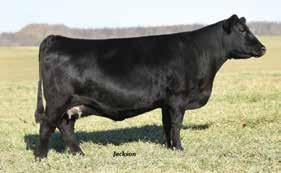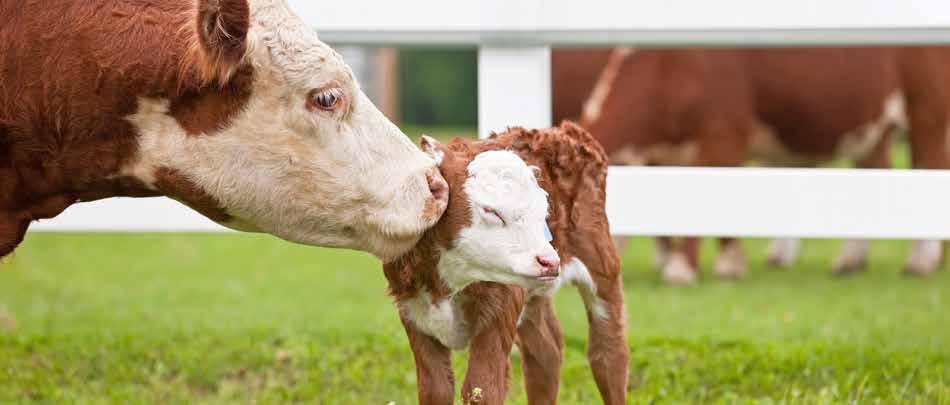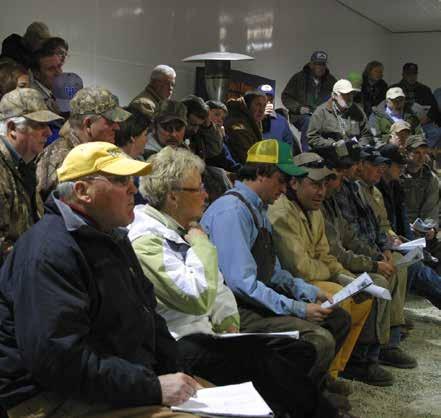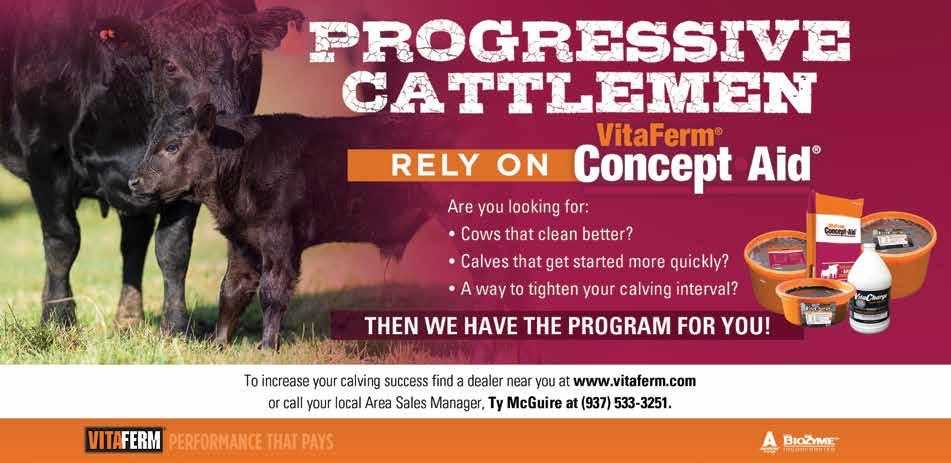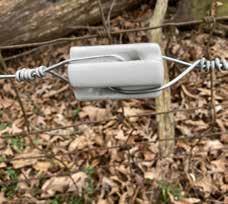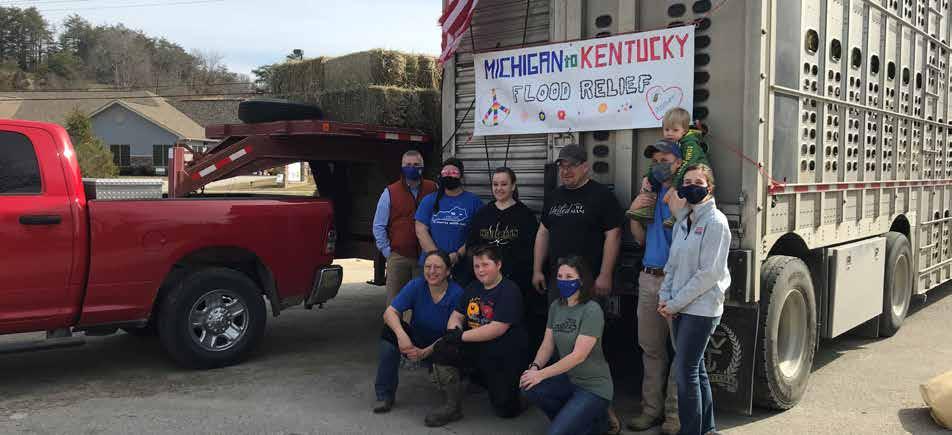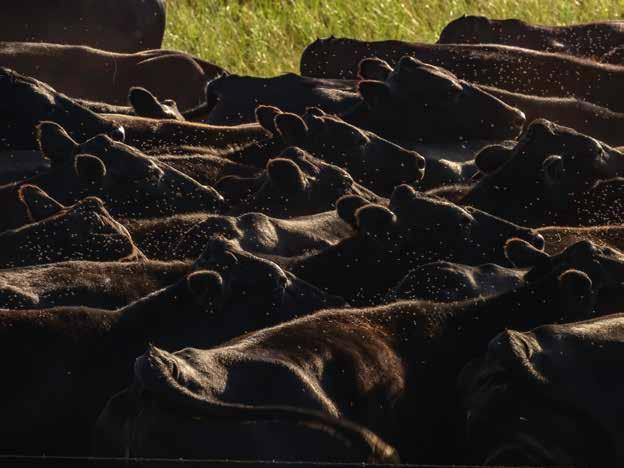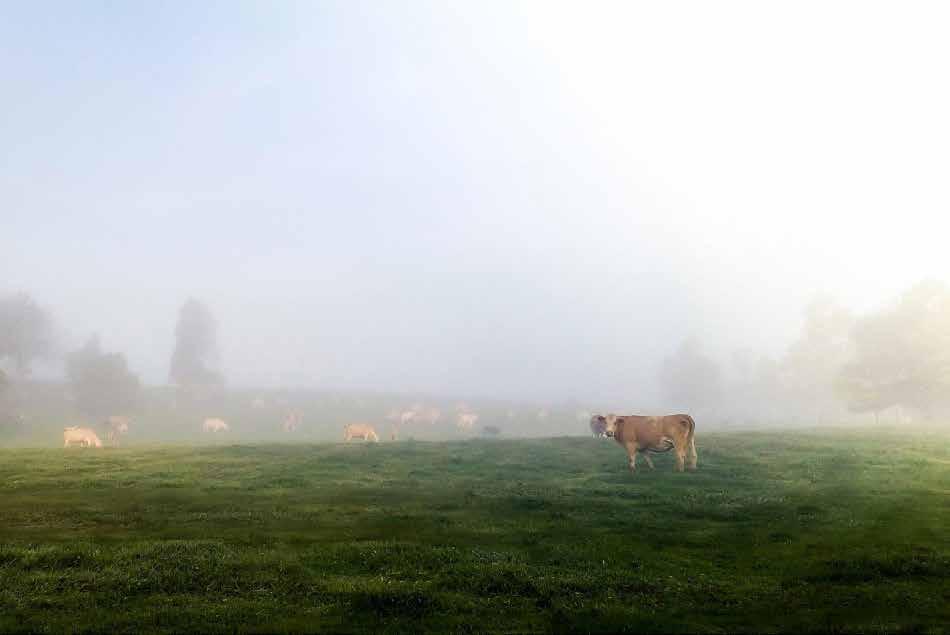FORAGES
MAKING AN OLD FENCE WORK! CHRIS D. TEUTSCH UK Grain and Forage Center of Excellence, Princeton, Kentucky
Good fences let you sleep at night! One of the biggest challenges when renting pastureland is marginal perimeter fencing. It is very hard to justify the investment in new fencing if you are on a short-term lease. One option is to install an electrified offset on the interior of the perimeter fence (Figure 1). This works especially well with old woven wire fences. The electrified offset 1) helps to contain livestock, 2) extends the life of the existing fence by keeping animal pressure off of it, and 3) provides a source of electricity for further subdividing pastures with temporary fencing. Lastly, offsets can be easily removed and taken with you if the lease doesn’t work out. Since electric fencing is a psychological barrier (nothing likes to get shocked) it needs to deliver a knee bending, eye watering jolt preferably to the moist nose of the animal. It is imperative that the animal’s first experience with electric fencing be a really painful one. For this to occur, offsets need to be installed correctly. If you take your time and install electric fencing correctly, it can be an extremely effective tool to control livestock. If you cut corners and use cheap materials or materials not designed for electric fencing, it can be an extremely frustrating experience. The objective of
Fig. 3. Wood post offsets are more rigid making them a good choice to install at the beginning and end of runs where there will be more pressure pushing back against them
Use twist on offsets for woven and barbed wire fences. The offsets consist of two galvanized legs that are twisted onto the existing fence holding the electrified offset approximately 10 inches from the existing fencing. One advantage of these offsets is that they move with the existing fencing reducing the chances of the electrified wire coming in contact with old fence (Figure 2). They are also easy to install and take off. Use wood post offsets at the beginning and end of runs and on problem posts. I like to use a more rigid wood post offset at the beginning and end of runs. This helps to get the offset wire away from the existing fencing (Figure 3). I also like to use these offsets on problem posts with in the run, like old railroad ties that have the existing fencing wrapped around them (Figure 4).
Fig. 2. Twist on offsets are easy to install and remove and are ideal for older fences since they move with the fencing material reducing the chances of shorts
Fig. 5. The beginning and ends of runs should be terminated using a bull nose insulator designed for high tensile fencing
Fig. 1. Electrified offsets can breathe new life into an old fence. They control livestock, extend the life of an existing fence, and allow for further subdivisions using temporary fencing
this article is to provide you with some practical tips for installing offsets that can effectively control livestock and extend the life of an old fence. Use good quality offsets. Make sure that plastic components in the offsets that you use are UV stabilized. Saving a few pennies now can result in a real headache as plastic components start to breakdown in the sunlight.
e,
n
Fig. 4. Wood post offsets are a good option for getting the hot wire away from posts that protrude and are littered with old fence
nd
20
Mount offsets at nose height of the livestock that you are trying to control. The height of the offset is important since your goal is to shock the animal in the face. For cattle this will be around 30 inches off the ground.
Use 170,000 PSI high tensile wire with a Class III galvanization. This wire is corrosion resistant, able to be hand tied, and economical. A good quality high tensile wire will cost about 2.5 cents/ft. Once installed, fence should be tensioned just tight enough to take the slack out.
COW COUNTRY • APRIL 2021
Start and end runs with an end strain or bull nose insulator designed for high tensile fencing. These insulators are designed for the tension exerted by high tensile fencing (Figure 5). They are constructed of either reinforced UV stabilized plastic or porcelain. If the electrified offset is close to the existing fence at the start and end of runs, install the bull nose insulator 4 to 6 ft from the end post. Use a good quality double insulated cable designed for electric fencing for leadout, jumping wires or going underneath gates. Never use residential wire for electric fencing. This wire is designed to carry 120 volts NOT 10,000. Always place underground wires in protective tubing. Whenever a cable carrying current is run under the ground, always place it in some type pipe or conduit that will protect it from future damage. Wires going under gates should be buried to a depth of approximately 6 to 12 inches. If not protected, breaks will occur in these wires and these shorts can be difficult to find and repair. I like to use
• A P U B L I C AT I O N O F T H E K E N T U C K Y C AT T L E M E N ’ S A S S O C I AT I O N



